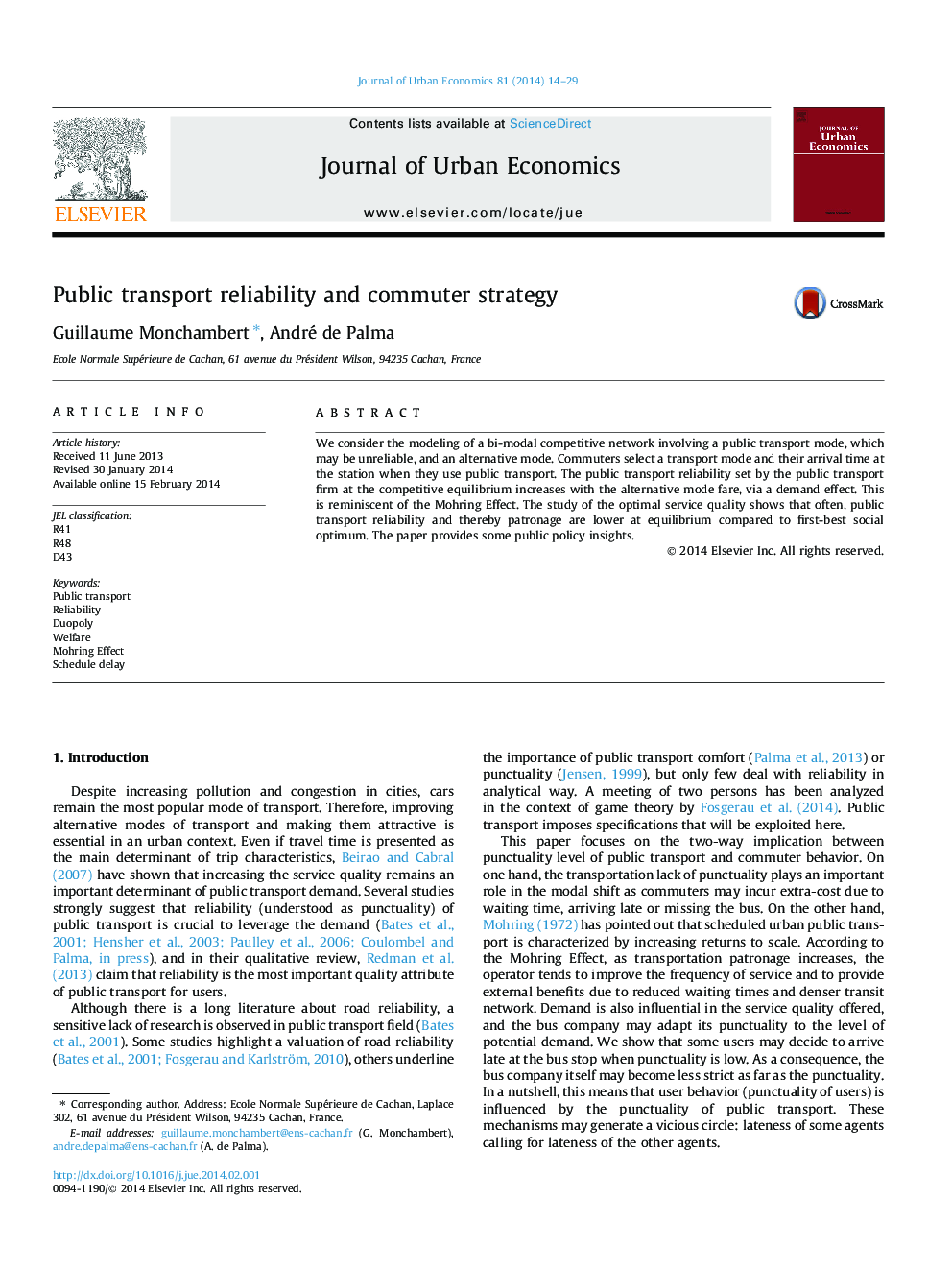| Article ID | Journal | Published Year | Pages | File Type |
|---|---|---|---|---|
| 971150 | Journal of Urban Economics | 2014 | 16 Pages |
Abstract
We consider the modeling of a bi-modal competitive network involving a public transport mode, which may be unreliable, and an alternative mode. Commuters select a transport mode and their arrival time at the station when they use public transport. The public transport reliability set by the public transport firm at the competitive equilibrium increases with the alternative mode fare, via a demand effect. This is reminiscent of the Mohring Effect. The study of the optimal service quality shows that often, public transport reliability and thereby patronage are lower at equilibrium compared to first-best social optimum. The paper provides some public policy insights.
Related Topics
Social Sciences and Humanities
Economics, Econometrics and Finance
Economics and Econometrics
Authors
Guillaume Monchambert, André de Palma,
